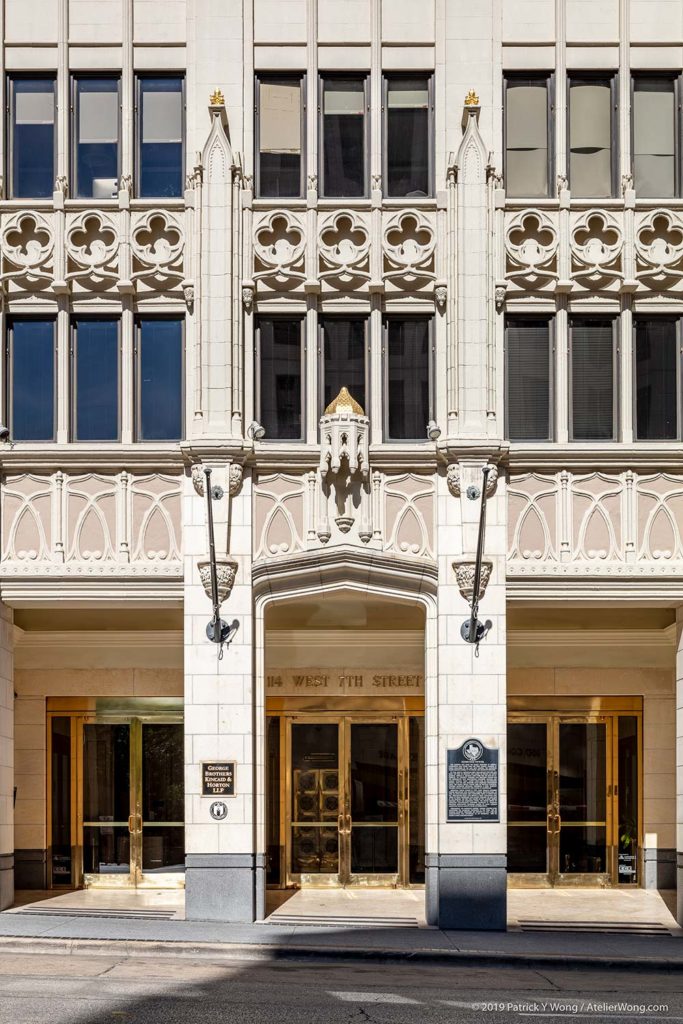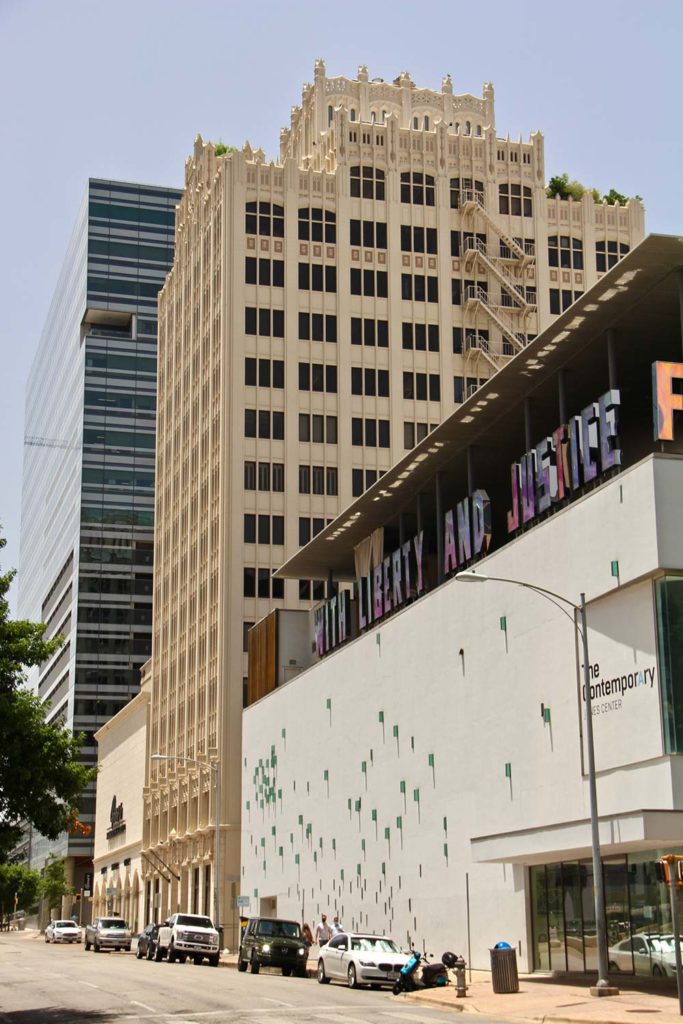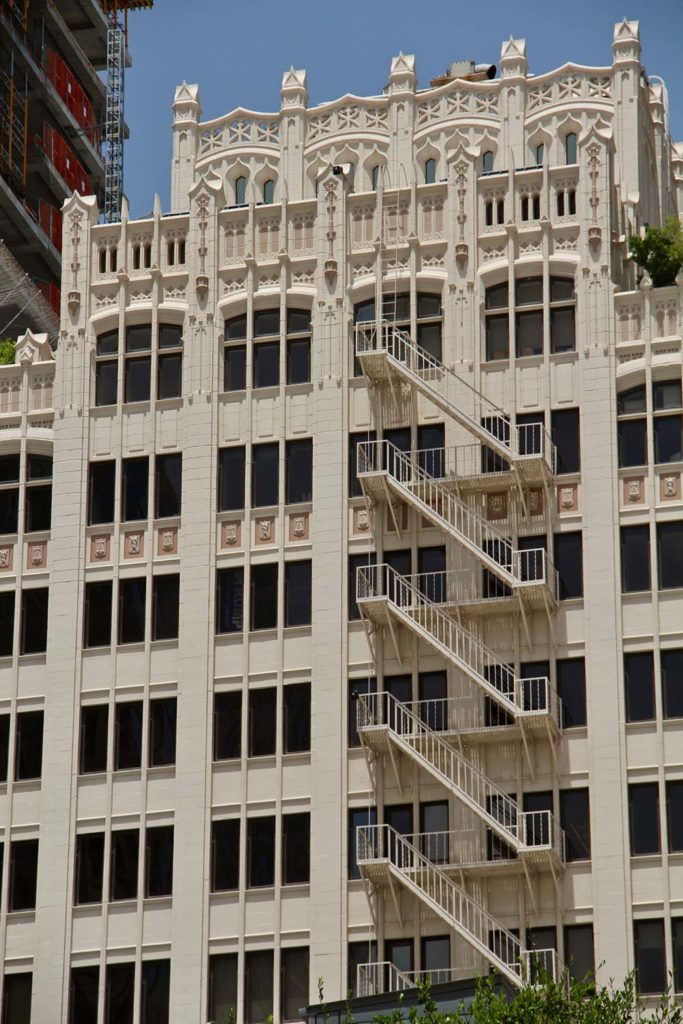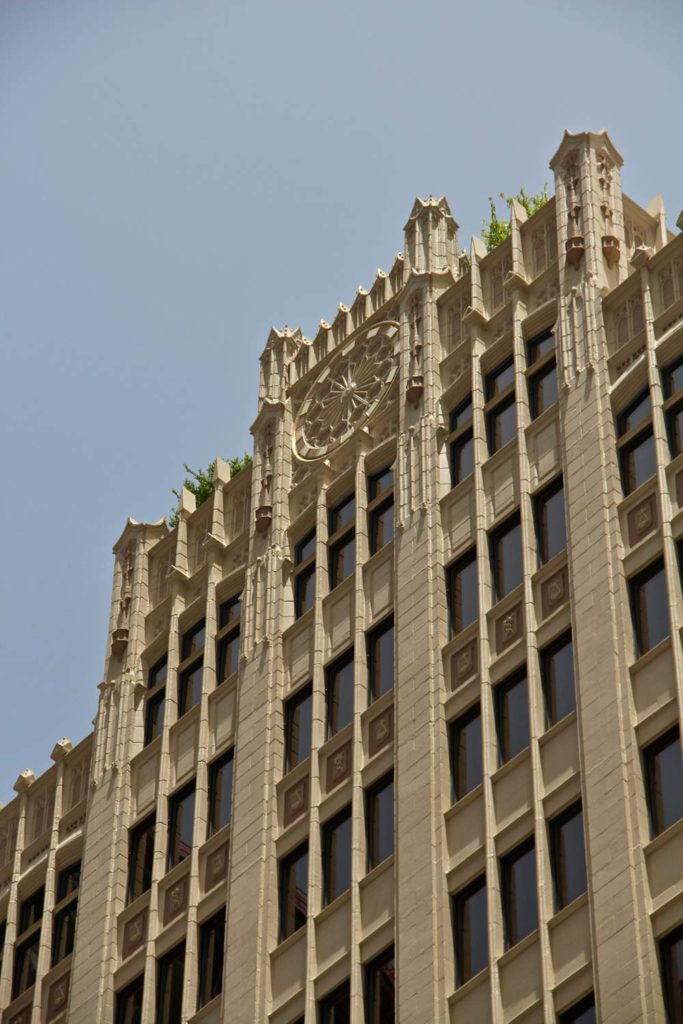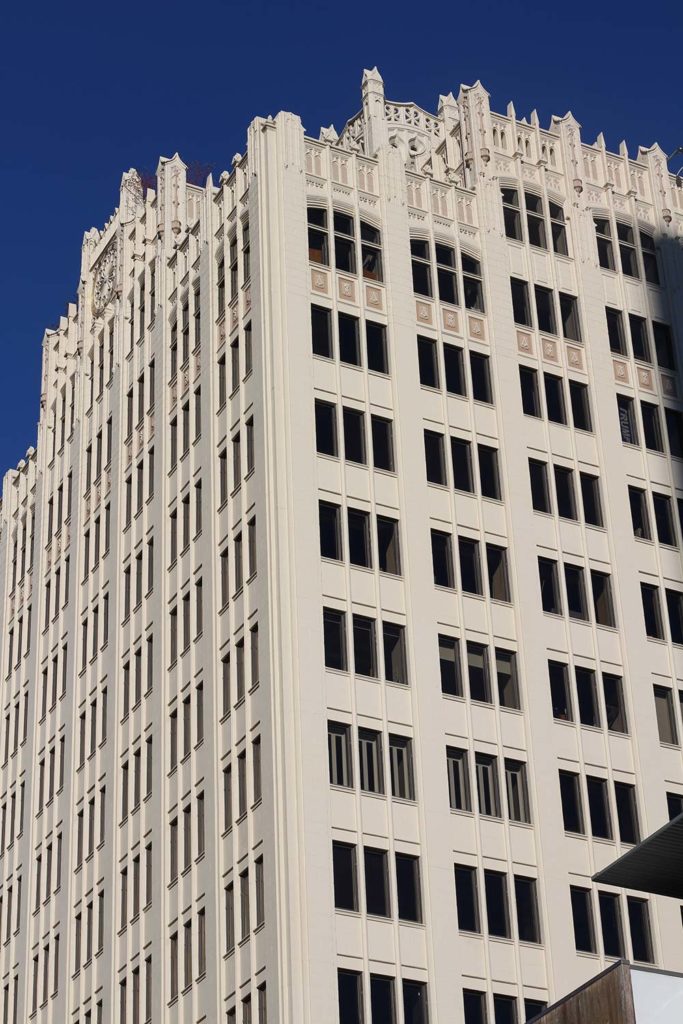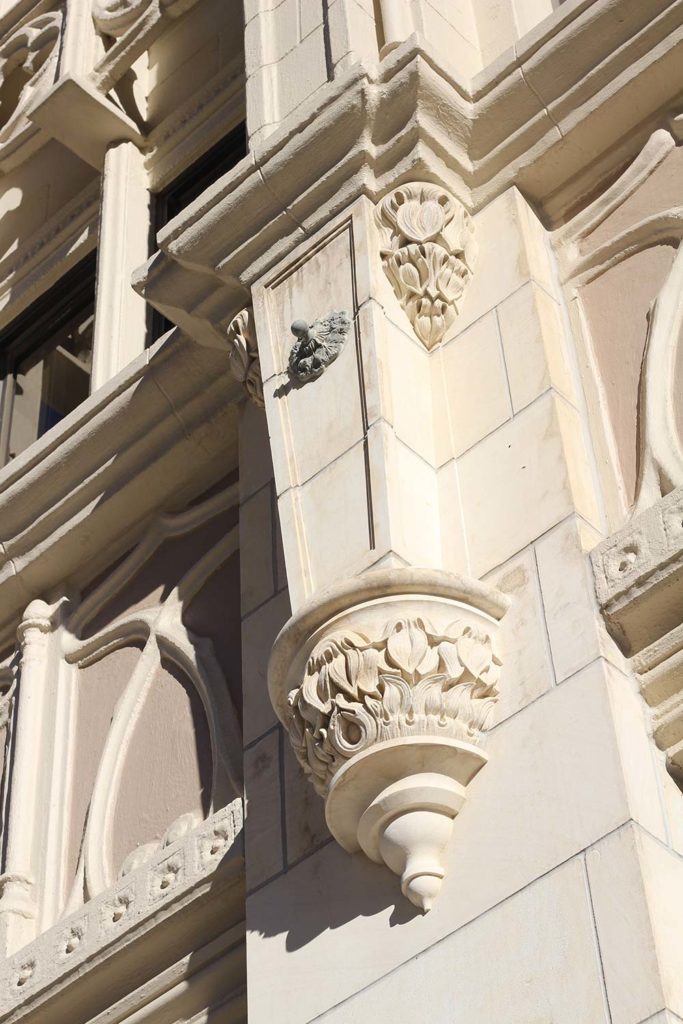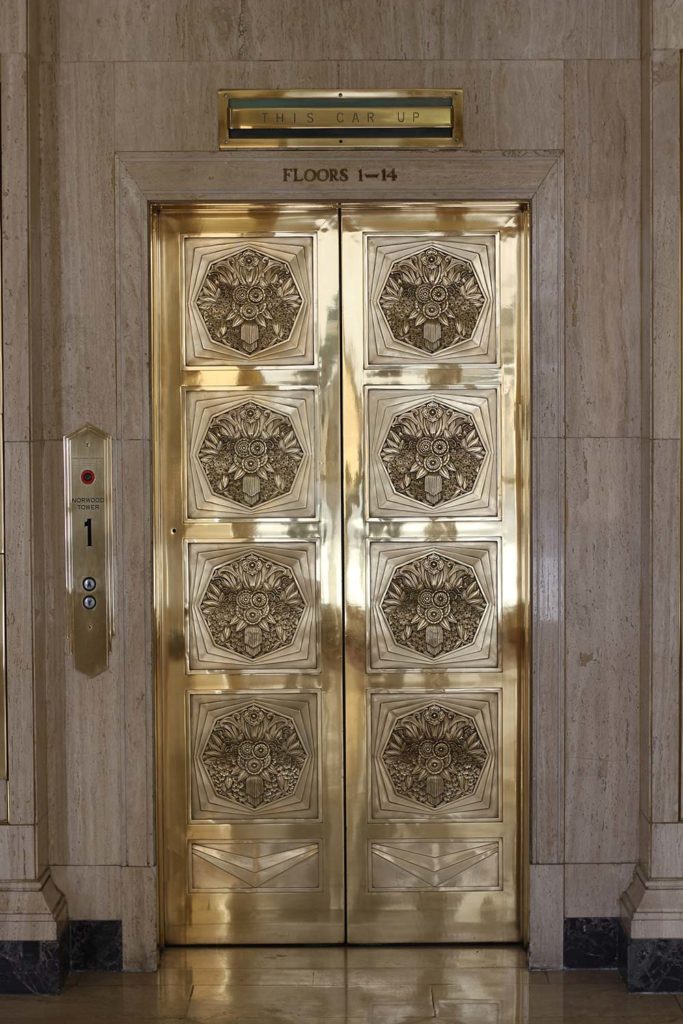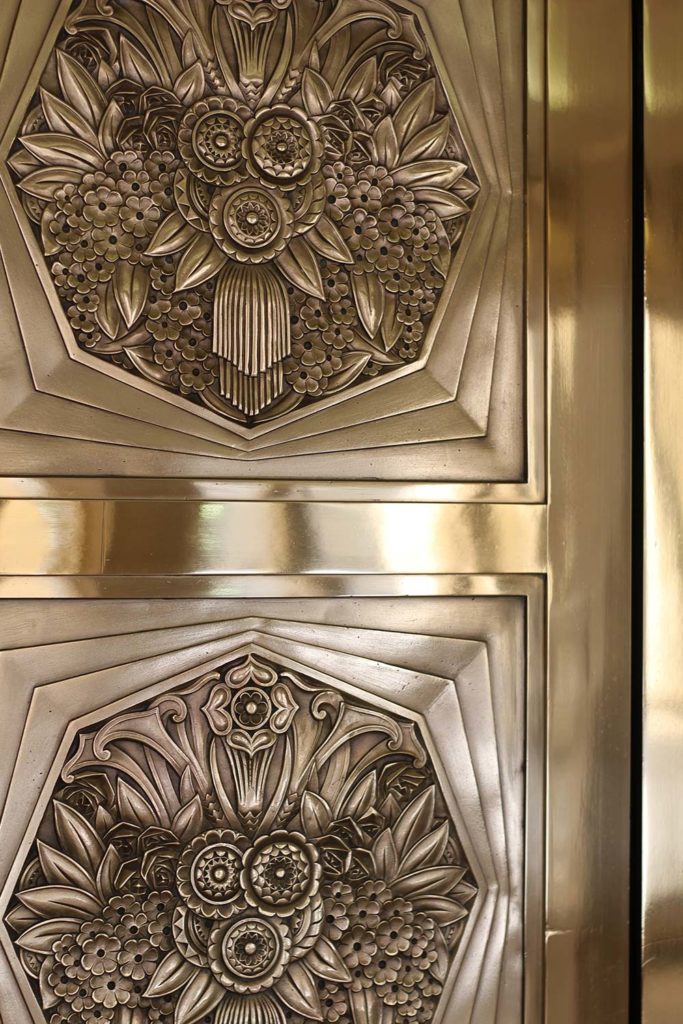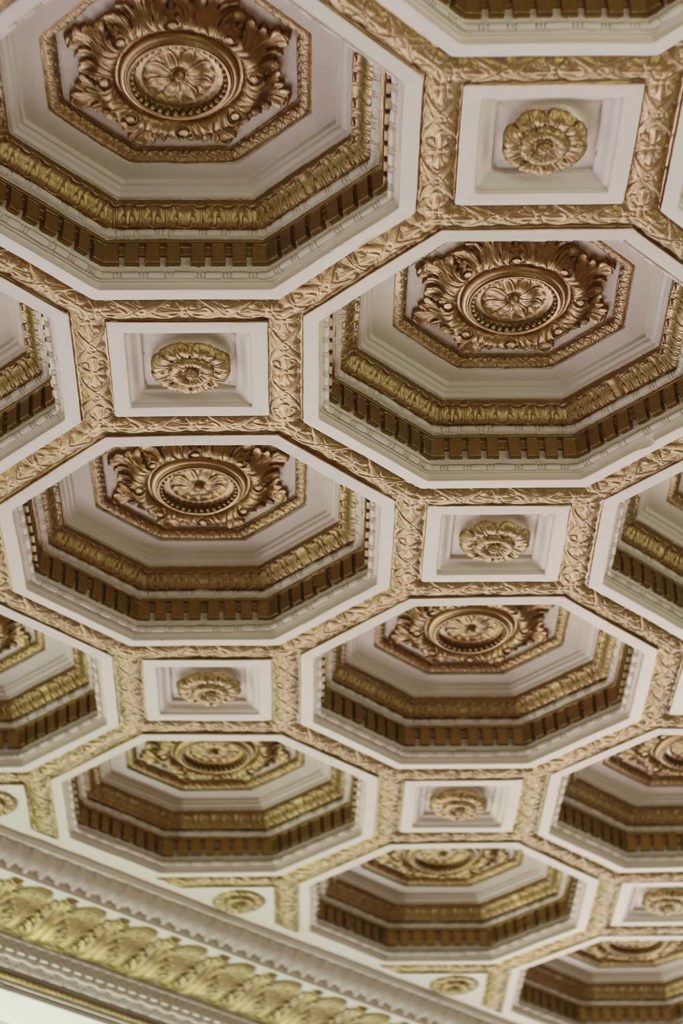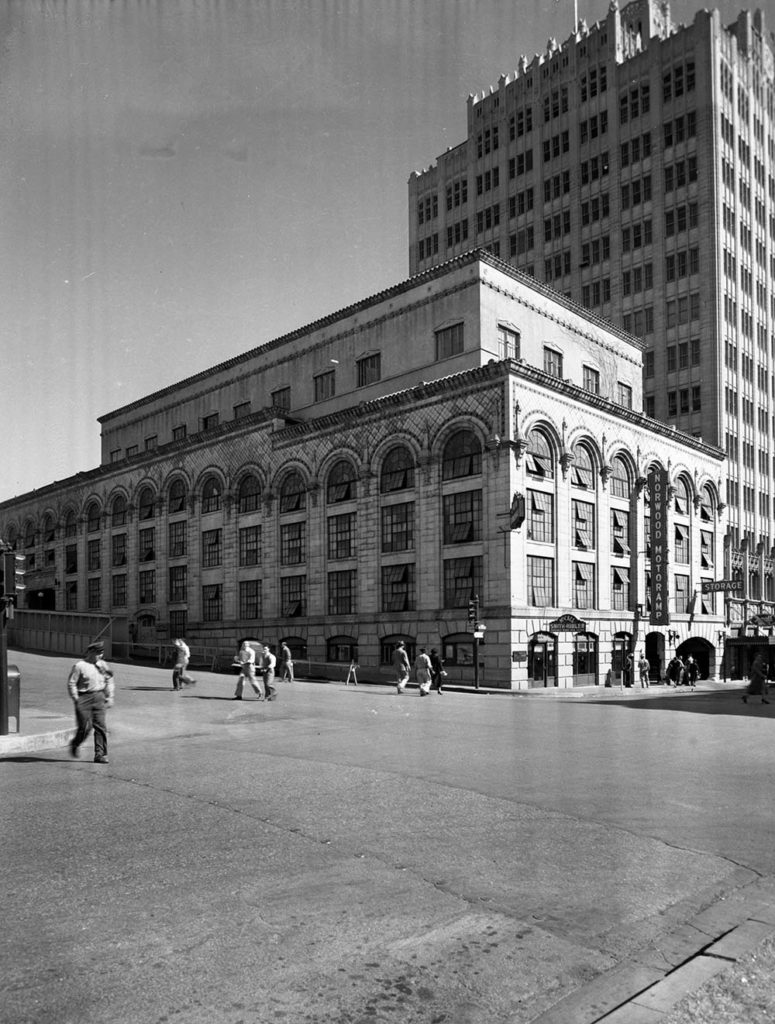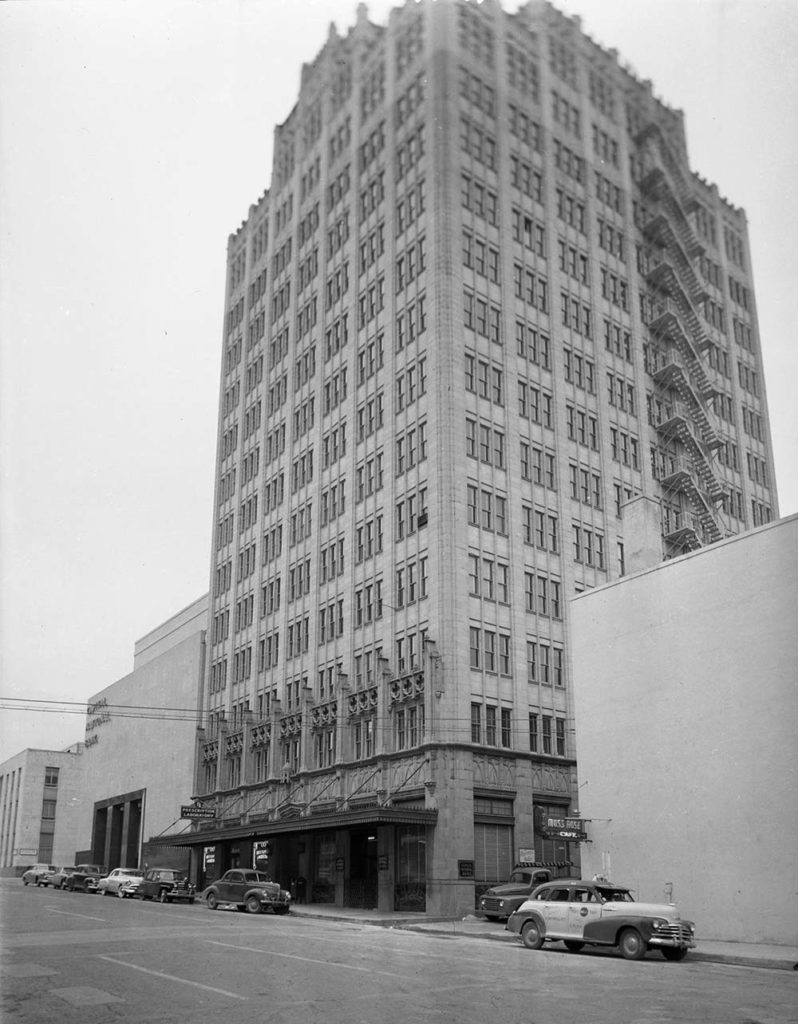Rising gracefully from the street, serene Norwood Tower was the tallest commercial building in Austin upon its completion in 1929. In addition, it was the first building in the city with central air conditioning and electric elevators, and its four-story parking garage (dubbed the “Motoramp”) introduced Austinites to the concept of the self-parking auto garage, in which ramps provided access to each parking level instead of elevators.
Norwood Tower exemplifies the Gothic Revival (aka “Commercial Gothic”) style that swept the United States in the early 20th century; two of the most famous examples are the Woolworth Building (1913) in Manhattan and Chicago’s Tribune Tower (1925). The Gothic style was inherently suited to the verticality of skyscrapers, having originally been employed in the great cathedrals of the Middle Ages, whose soaring pointed vaults were meant to draw the eye toward the heavens.
Starting at ground level, eight piers transform into pilasters that extend to the top of the structure; two narrow ribs between each pilaster define identical bays of three windows. The sense of verticality is accentuated at the top floors, where the square floor plan of the first 13 stories transitions to a cruciform (cross) shape, and finally to a narrow rectangle. While most of the structure contains offices, the top floors comprise a penthouse residence, with rooftop gardens on each of the four corners of the building.
A metal awning extending the length of the building was removed in the 1950s; see if you can identify the small ornamental brackets that once held the canopy’s support rods. A shallow pointed arch topped by a gold-capped lantern denotes the main entrance; at the third story a band of quatrefoils (resembling four-leaf clovers) runs across the façade, topped by tiny gargoyles. The upper levels terminate in pointed finials and a clock tower with a face that resembles a Gothic rose window (the hands are gone but the Roman numerals remain). A couple of floors below, spot the narrow band of reliefs representing the legal and medical professionals who were the tower’s first tenants (the scales of justice and a caduceus, or “wand of Hermes”).
After taking in the exterior, step into the small but well-preserved lobby. The walls are covered in Italian travertine; the marble wainscots and column covers were added later. The polished Texas limestone floor reflects three brilliant tooled brass elevator doors, which showcase their original Art Deco medallions. The coffered ceiling, once covered by a 1950s-era suspended ceiling, was restored based on recovered plaster fragments and painted in 22-karat gold leaf by students from the University of Texas. – Bud Franck

